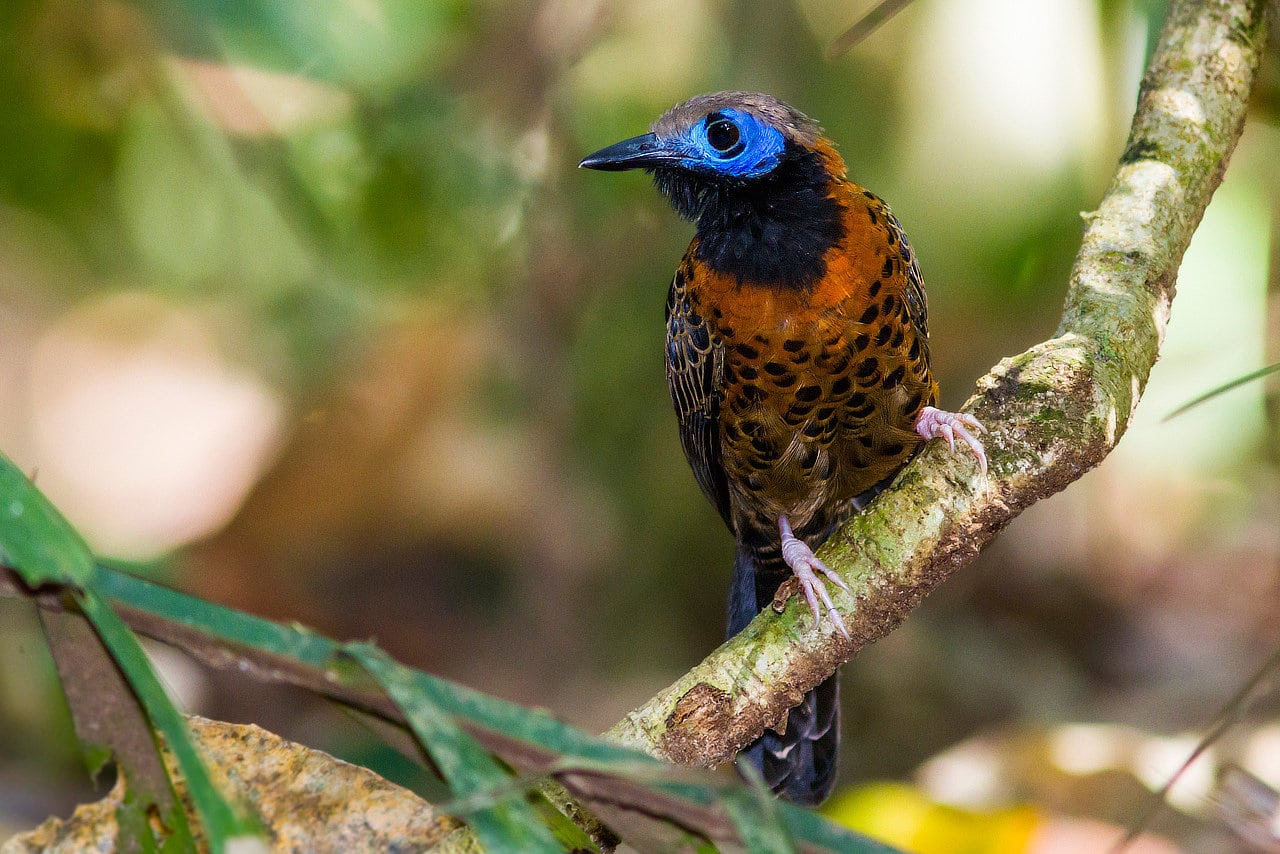
Panama: A Biodiversity Hotspot
- Next tour dates June 6-15, 2025
- Duration 10 days
- Lodging 3-4 stars
- Difficulty Easy to Moderate
- Group size Max. 8 people
- Price USD $TBD per person*
Overview
Panama, a biodiversity hotspot, is home to the largest number of birds of any country in Central America. Smaller than South Carolina, it has over a thousand recorded bird species. This astonishing diversity is easily accessible, making it possible to attain a very long bird list within a short period of time. What’s more, it is possible to see more than a hundred regional endemics. For these reasons, Panama is one of the top birding destinations in the world.
This 10-day Panama birding tour explores the Central and Western regions of the country, from the Panama Canal to the border of Costa Rica. Along the way, we will visit several life zones of the tropical forest. Dry forest, lowland rainforest, wet forest, and cloud forest, each offering unique landscapes and inhabitants.
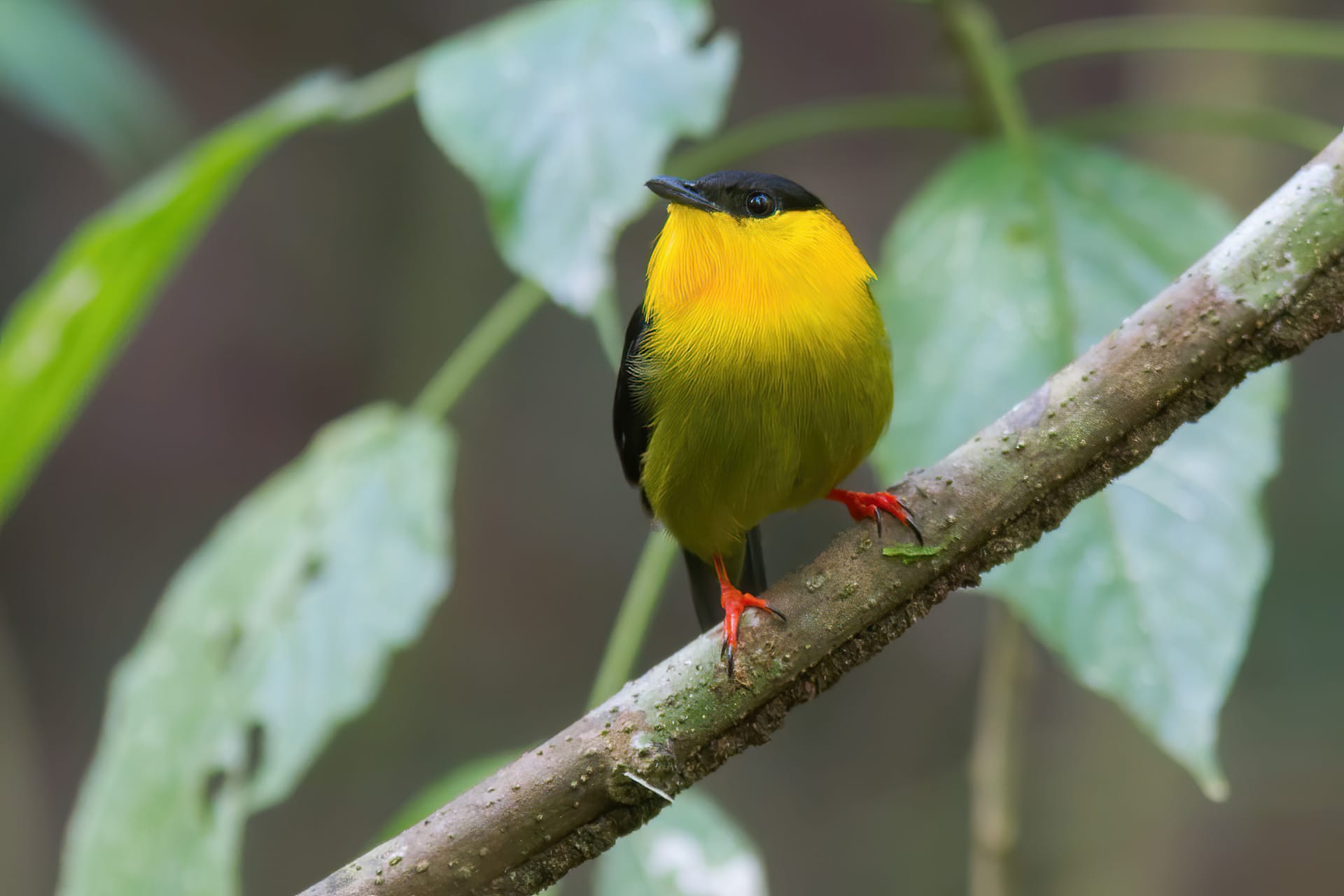
Itinerary
DAY 1: ARRIVAL IN PANAMA CITY
To start off the Panama birding tour, you will be met at the Tocumen International Airport in Panama City and escorted to your accommodations for the night. We will have a short orientation and enjoy our first dinner together.
DAY 2: CERRO AZUL
With our bags packed, we will depart early this morning as we venture to Cerro Azul. This beautiful region is an ideal site to find the Panamanian endemic Stripe-cheeked Woodpecker. We will also look for Yellow-eared Toucanet, Blue Cotinga, Black-and-yellow Tanager, Tawny-capped Euphonia, White-ruffed Manakin among many others. Local bird feeders attract Rufous-crested Coquette, Violet-capped, Violet-headed and Snowy-bellied hummingbirds. Shining Honeycreeper, Rufous Motmot and other species take advantage of the many gardens and feeders in the area. This evening we will check into another hotel, where we will be staying for the next few nights.
DAY 3: METROPOLITAN NATURAL PARK & BAY OF PANAMA
Despite a population of over one million people, Panama City is a great place to bird. Millions of migratory birds stop to rest and regain strength in the mud flats of the Bay of Panama. At low tide, we will visit the Old Panama Mudflats for a chance to see Short-billed Dowitcher, Marbled Godwit, Whimbrel and many others. We will continue birding the mangroves looking for specialties including Straight-billed Woodcreeper, Northern Scrub-Flycatcher, Common Black Hawk (Mangrove) and Yellow Warbler (Mangrove). Sapphire-throated and Scaly-breasted hummingbirds, Rufous-browed Peppershrike, Black-necked Stilt, Cocoi Heron, as well as yellowlegs, sandpipers, night-herons and others are found here.
Our final stop for the day will be a visit to Metropolitan Natural Park, the only tropical forest in Latin America located within city limits. Here, we will be on the lookout for more Panama City birds such as Lance-tailed Manakin, Yellow-green Tyrannulet (endemic), Rosy Thrush-Tanager, Yellow-crowned Parrot, Yellow Tyrannulet, and Orange-billed Sparrow.
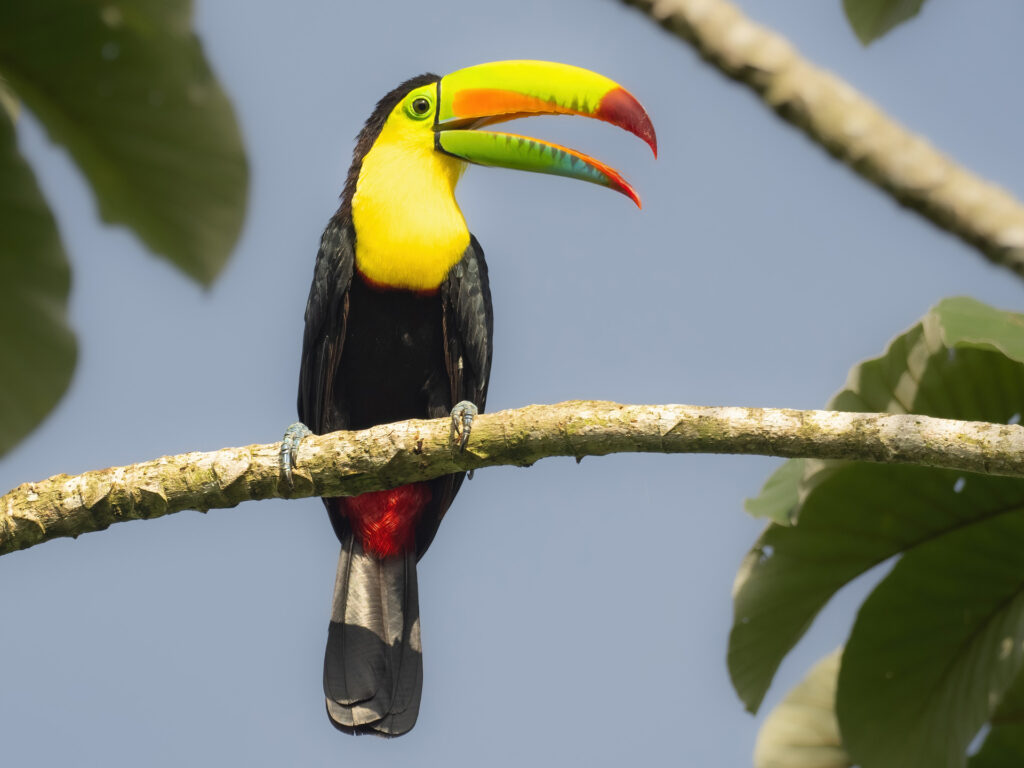
DAY 4: SOBERANIA NATIONAL PARK
Early this morning we climb the 32 m high observation tower at the Panama Rainforest Discovery Center to look for canopy species such as Blue Cotinga, Pied Puffbird and Green Shrike-Vireo. Several species of parrots, toucans and raptors are also targets for the morning. Here we will also enjoy a picnic lunch at the visitors’ center buzzing with 14 different species of hummingbirds. In this national park we will also explore the famous Pipeline Road. Its high diversity of birds is attributed to the habitat heterogeneity in the park – secondary, old growth forest, swamps and streams create the landscape here.
If army ants are found, several professional ant-followers can be seen – Ocellated, Spotted, Bicolored and Chestnut-backed antbirds and the prized Rufous-vented Ground-Cuckoo, if we are very lucky! Golden-collared, Blue-crowned and Red-capped manakins are found here. Pipeline Road is also well-known for its trogons; five species can be seen on a very lucky day. Slaty-tailed, Gartered and Black-throated trogonsare the most common. Today will truly be a highlight of this Panama birding tour!
DAY 5: CULEBRA TRAIL & FINCA LERIDA
After some early birding around the hotel and breakfast we will continue our Panama birding tour as we head to the domestic airport to take our flight to Chiriqui. From the city of David in western Panama, we will transfer by land to Boquete. After we check in to our hotel, we will visit the Culebra Trail to begin looking for the highland endemics such as Golden-browed Chlorophonia, Long-tailed Silky-flycatcher, and Spangle-cheeked Tanager among many others.
In the afternoon we will visit Finca Lerida and explore its beautiful gardens to find the Talamanca, Scintillant, and Stripe-tailed hummingbirds and the impressive Violet Sabrewing. But, these lush gardens attract more than hummingbirds. Flame-colored Tanager and Slaty Flowerpiercer are a few more birds we hope to see here. We will also search for the enigmatic and special Maroon-chested Ground Dove.
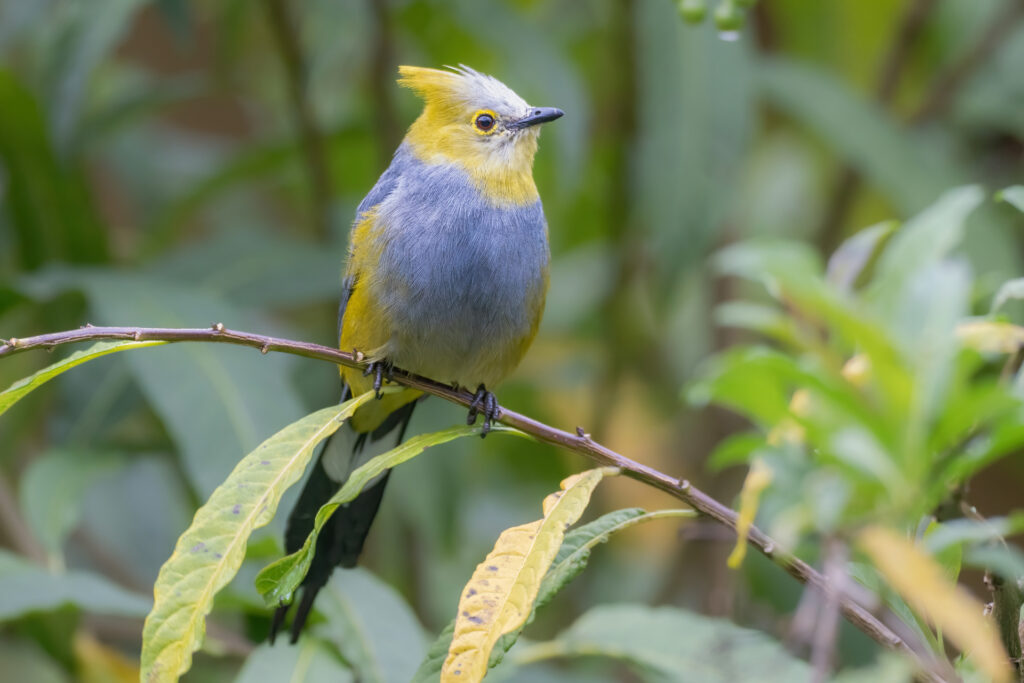
DAY 6: PALO SECO & CONTINENTAL DIVIDE
The Fortuna Cloud Forest is perhaps one of the best-preserved cloud forests in all of Central America. Clouds cover the forest over 40% of the day. This coupled with the humidity, low temperatures and high precipitation creates a forest like no other. The heavy humidity released by the Caribbean Sea nearby, and the high mountains of Cordillera Talamanca create the perfect habitat for some of the most sought-after avifauna in Panama.
Birds found in this area are Black Guan, Bare-necked Umbrellabird, Lattice-tailed Trogon, Blue-and-gold Tanager, and Azure-hooded Jay. Black-bellied Hummingbird, White-tailed Emerald, White-bellied Mountain-Gem and Snowcap are some hummingbird species found here. Highland streams are good places to search for Torrent Tyrannulet and American Dipper. We will also have the opportunity to explore a bit of the Caribbean slope as we search for Pale-billed Woodpecker, Crimson-collared Tanager, Montezuma Oropendola and many others.
DAY 7: BAJO MONO & VOLCAN BARU
In Bajo Mono, we will look for the captivating Resplendent Quetzal at the Pipeline and Los Quetzales trails. We will also look for Prong-billed Barbet, Three-wattled Bellbird, Black-faced Solitaire and the elusive Wrenthrush. In the afternoon, we will look for the regional endemic birds of higher elevation. For that, we will need to climb the highest point in Panama, Volcan Baru. During the ascent in 4×4 jeeps, we will try to locate Fiery-throated Hummingbird, Sooty-capped Chlorospingus, Sooty Thrush, and Timberline Wren, among many other birds.
Upon reaching the top, we will look for our last diurnal endemic bird, which is restricted to the summits of the Talamanca mountains – the Volcano Junco. After we watch the sunset from the “roof of Panama” we will head down and start looking for the nocturnal regional endemics. It is a prime spot to find the elusive Unspotted Saw-whet Owl, Costa Rican Pygmy-Owl, Bare-shanked Screech-Owl and Dusky Nightjar.
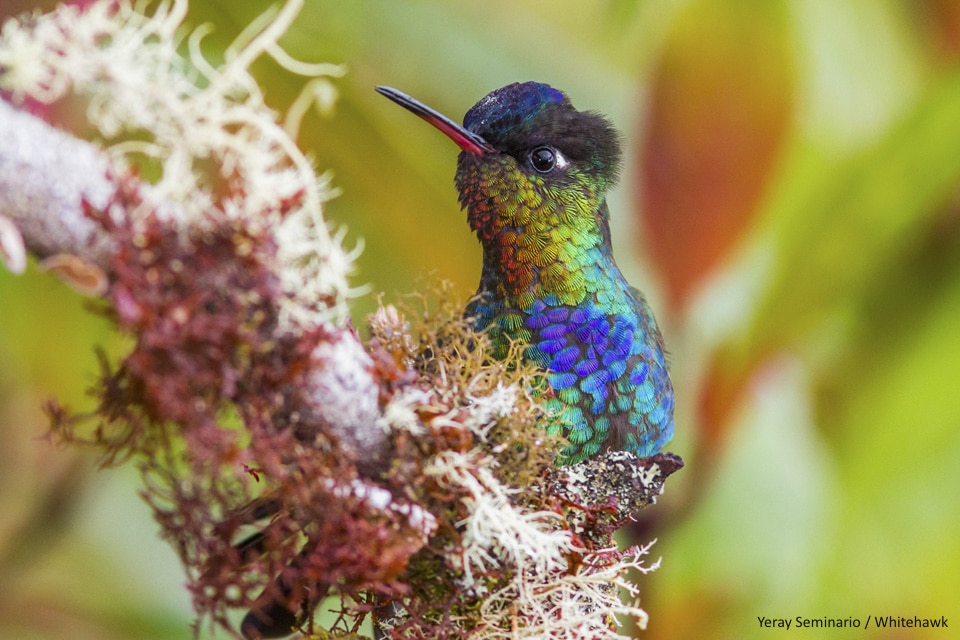
DAY 8: CHIRIQUI FOOTHILLS – PARAISO & LAGUNA DE VOLCAN
Today we will explore the lower elevations (~2,650 ft) of Chiriqui as we search for the regional endemics of the South Central American Pacific slope. Among these it is possible to find Veraguan Mango, Charming Hummingbird, Fiery-billed Aracari, Black-hooded Antshrike, Costa Rican Brushfinch, Riverside Wren and Spot-crowned Euphonia. We will visit Birding Paradise – where a number of species come to partake in the plethora of bird feeders in the gardens. Some of the outstanding birds are Plain-capped Starthroat, Blue-throated Goldentail, Lesson’s Motmot, and Scarlet-rumped Tanager (Cherrie’s). In the afternoon, we will continue on to the Laguna de Volcan, where we can see Olive-crowned Yellowthroat (Chiriqui), Rose-throated Becard and Northern Jacana.
DAY 9: LOS QUETZALES TRAIL / FLIGHT TO PANAMA
On our final morning in the Chiriqui Highlands, we will further explore the Los Quetzales Trail – where we will have a second chance to search for any of those birds we may have missed, or to get better looks at some of the more elusive species. After lunch, we will head to the airport for our return flight to Panama City. We will check in to our hotel and enjoy our final dinner together.
DAY 10: DEPARTURE
After breakfast, we will transfer you to Tocumen International Airport. Today you will say “hasta luego” to this enchanting country and return home, where you’ll be eager to share your incredible Panama birding experiences that perhaps include a few “lifers”!
Our Panama birding tour concludes in Panama City.
Species
BIRDS
- Black Guan
- Rufous-vented Ground-Cuckoo
- Dusky Nightjar
- Talamanca Hummingbird
- Scintillant Hummingbird
- Violet Sabrewing
- Rufous-crested Coquette
- Black-bellied Hummingbird
- White-tailed Emerald
- White-bellied Mountain-Gem
- Green-fronted Lancebill
- Snowcap
- Fiery-throated Hummingbird
- Violet-capped Hummingbird
- Veraguan Mango
- Charming Hummingbird
- Black-necked Stilt
- Northern Jacana
- Common Black Hawk
- Barred Hawk
- Bare-shanked Screech-Owl
- Costa Rican Pygmy-Owl
- Unspotted Saw-Whet Owl
- Lattice-tailed Trogon
- Gartered Trogon
- Resplendent Quetzal
- Lesson’s Motmot
- Pied Puffbird
- Red-headed Barbet
- Prong-billed Barbet
- Yellow-eared Toucanet
- Fiery-billed Aracari
- Stripe-cheeked Woodpecker
- Yellow-crowned Parrot
- Black-hooded Antshrike
- Chestnut-backed Antbird
- Spotted Antbird
- Bicolored Antbird
- Ocellated Antbird
- Silvery-fronted Tapaculo
- Straight-billed Woodcreeper
- Ruddy Treerunner
- Lance-tailed Manakin
- White-ruffed Manakin
- Golden-collared Manakin
- Bare-necked Umbrellabird
- Blue Cotinga
- Three-wattled Bellbird
- Rose-throated Becard
- Yellow-green Tyrannulet
- Dark Pewee
- Northern Scrub-Flycatcher
- Rufous-browed Peppershrike
- Green Shrike-Vireo
- Azure-hooded Jay
- Timberline Wren
- Riverside Wren
- Black-faced Solitaire
- Sooty Thrush
- Black-and-yellow Silky-Flycatcher
- Long-tailed Silky-Flycatcher
- Golden-browed Chlorophonia
- Spot-crowned Euphonia
- Tawny-capped Euphonia
- Rosy Thrush-Tanager
- Costa Rican Brushfinch
- Volcano Junco
- Sooty-capped Chlorospingus
- Wrenthrush
- Olive-crowned Yellowthroat (Chiriqui)
- Black-cheeked Warbler
- Collared Redstart
- Flame-colored Tanager
- Blue-and-gold Tanager
- Spangle-cheeked Tanager
- Slaty Flowerpiercer
- Black-and-yellow Tanager
- Scarlet-rumped Tanager
- Shining Honeycreeper
TOUR BASICS
Guide: Edwin Campbell
Single Supplement: US$660
Lodging: Comfortable and clean hotels and inns
Food: Quality, fresh, local ingredients prepared in Panamanian and International styles
Weather: Warm and humid in the Central Region. Cool and humid in the Western highlands, particularly at night.
Difficulty: Easy to Moderate. Most days will include a fair amount of walking within undulating terrain.
*For more information on what is included/not included, as well as our booking and cancellation policies, please review our Terms & Conditions.
* Pricing based on a group size of 4 people. With smaller groups, an additional fee will be charged.
LEARN MORE
Upcoming Tour Dates:
June 7-16, 2024
June 6-15, 2025
June 5-14, 2026
From our blog:
Panama Wildlife: A Glimpse at Great Biodiversity
Top 10 Birds of Panama
A Neotropical Birding Mecca: Pipeline Road Panama
